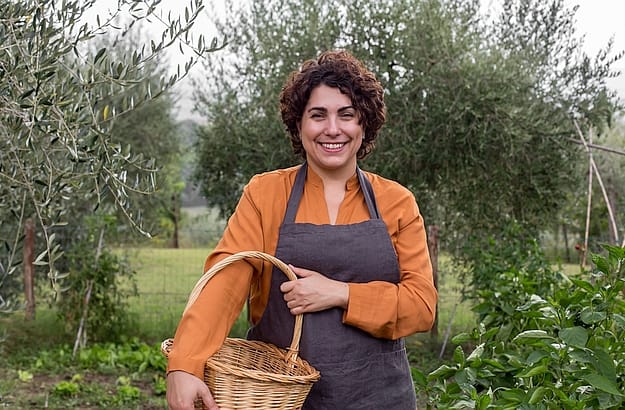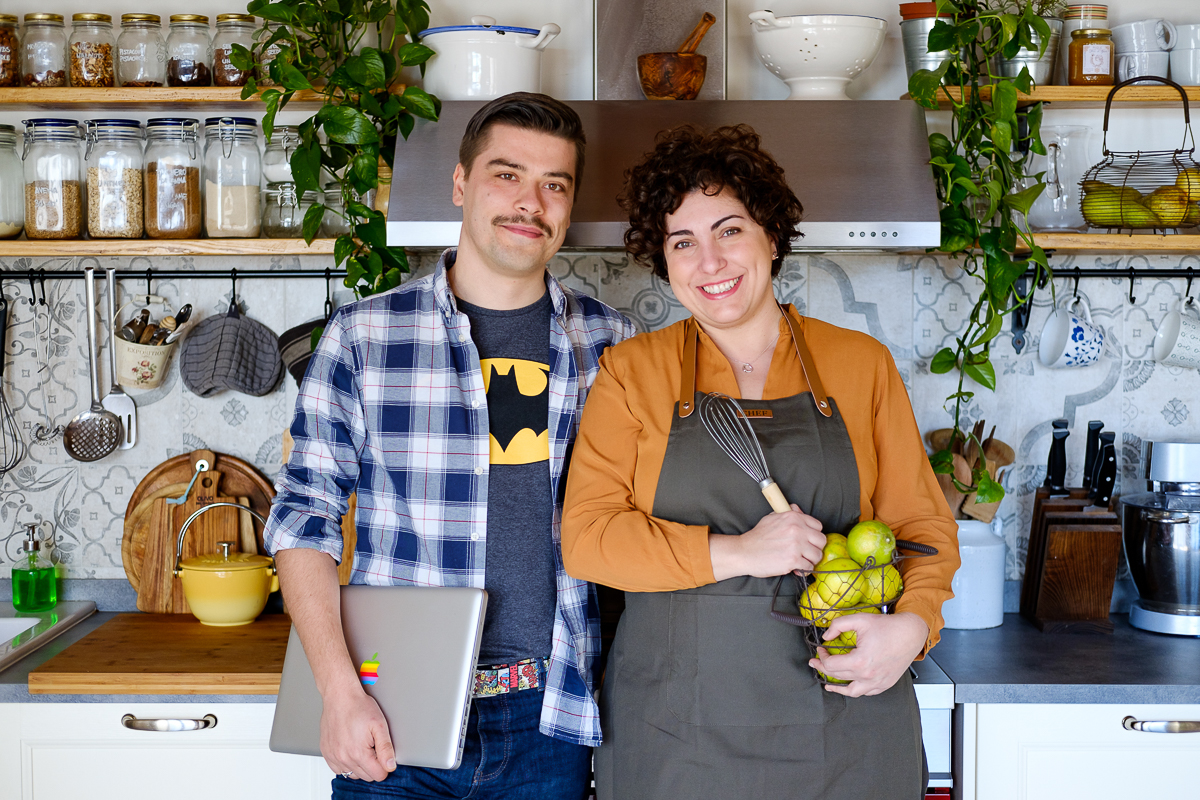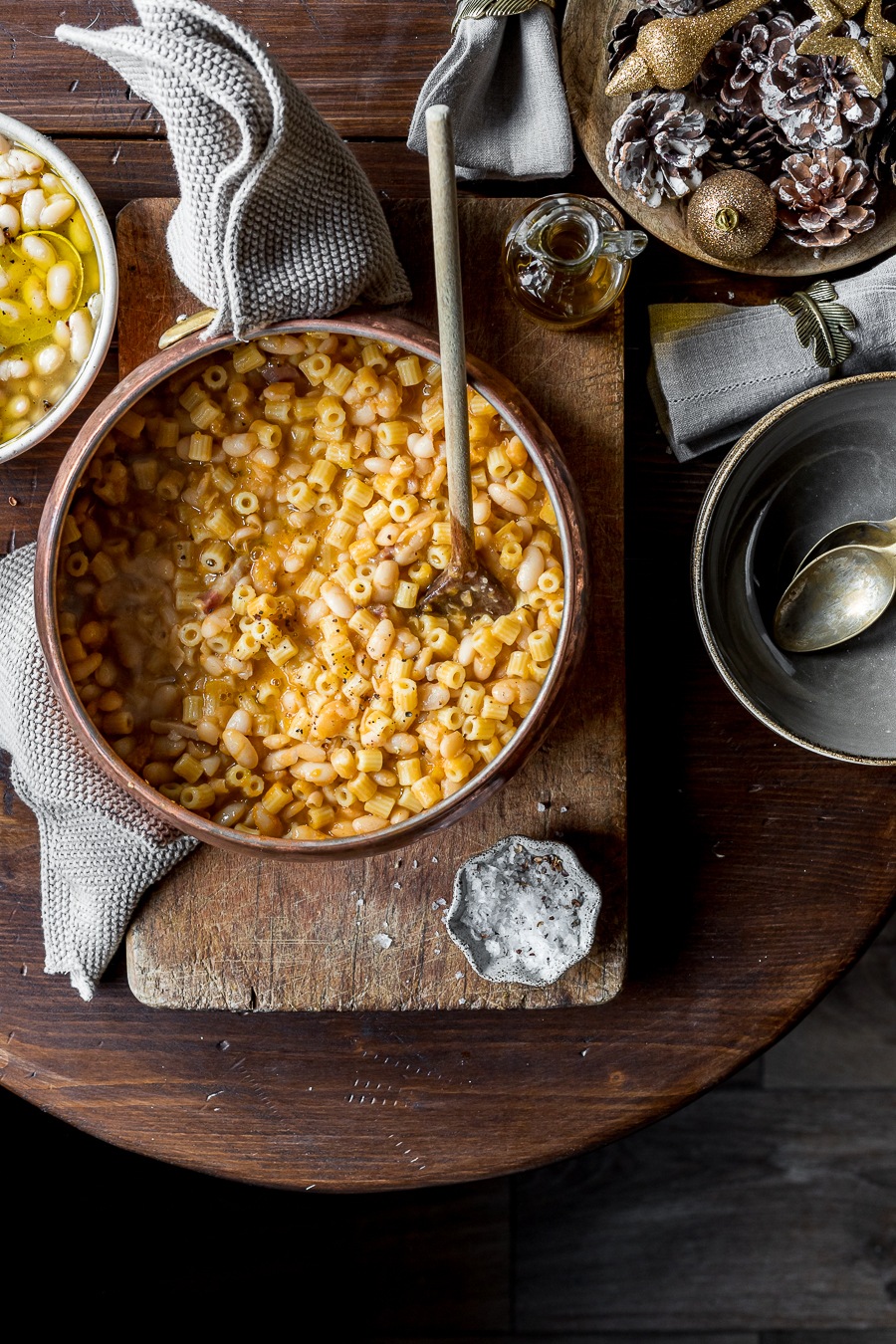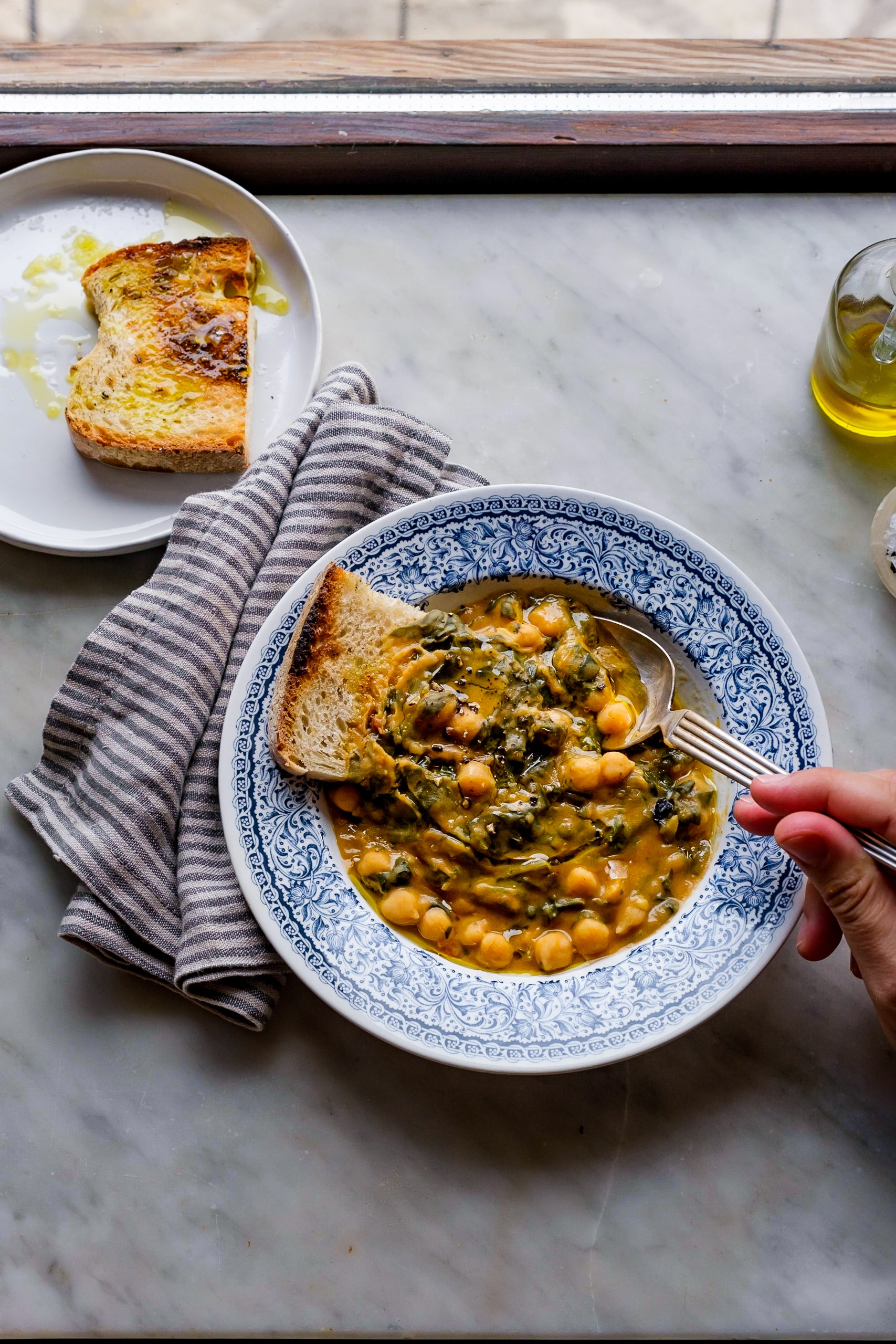The Art of Making Do: Giulia Scarpaleggia's Love Letter to Tuscan Peasant Cooking


There's a cloth bag hanging in kitchens across rural Tuscany, filled with what most people would call garbage. Stale bread, too hard to bite, too dry to spread with butter, destined for the bin in any modern kitchen. But to generations of Italian grandmothers, and to Giulia Scarpaleggia, these forgotten crusts represent the foundation of some of Italy's most beloved dishes.
"My grandmother kept a cloth bag in the kitchen where she would store stale bread," Giulia explains from her family home in the Sienese countryside. This simple practice, born from necessity and refined through centuries, embodies the philosophy that has defined her work as a food writer, cookbook author, and cooking instructor: l'arte dell'arrangiarsi, the art of making do with what you've got.
From Blog to Saveur-Recognized Voice
In 2009, Giulia founded Juls' Kitchen as a simple archive of family recipes and stories, writing in both Italian and English from her kitchen in Tuscany. What began as a personal collection grew into something far more significant. By 2019, Saveur magazine had named it the best food culture blog, recognizing Giulia's ability to capture the soul of Italian home cooking while making it accessible to cooks around the world.
But Giulia's reach extends far beyond her blog. She's now the author of six cookbooks, with her latest, Cucina Povera: The Italian Way of Transforming Humble Ingredients into Unforgettable Meals, published by Artisan Books in 2023. She runs her newsletter Letters from Tuscany on Substack, hosts the podcast Cooking with an Italian Accent with her husband and photographer Tommaso Galli, and teaches cooking classes from the Juls' Kitchen Studio they built on their property.
"I am a proud home cook," Giulia says. "I learned to cook from my grandmother and my mother, and, as a cookbook lover, from cookbooks." This isn't false modesty. It's a deliberate positioning that makes her work so relatable. She's not a restaurant chef translating complicated techniques for home kitchens. She's a home cook who understands exactly what works in real life, with real pantries, on real weeknight schedules.
Cucina Povera: More Than Poverty Cooking
The term "cucina povera" literally translates to "poor cooking" or "peasant cooking," but this fails to capture the sophistication and ingenuity at its heart. It's not about deprivation. It's about transformation.
"Cucina povera dishes are immediately recognizable," Giulia writes. "The use of humble ingredients, seasonal vegetables, and simple cooking techniques, plus a healthy dose of inventiveness. Cooking this way transforms ingredients into hearty meals that are more than the sum of their parts."
This philosophy reveals itself most beautifully in Tuscany's bread-based soups, dishes that turn yesterday's mistake into today's comfort. Take her Pappa al Pomodoro, Giulia's self-proclaimed favorite comfort food and the ultimate expression of cucina povera. This "leftover bread and tomato soup" sounds unpromising on paper. In reality, it's a study in how poverty breeds creativity.

Stale Tuscan bread (notably unsalted, a tax-dodging tradition dating back centuries) gets torn into chunks and simmered with ripe tomatoes, garlic, olive oil, and basil until it breaks down into a porridge-like consistency. The bread absorbs the sweet acidity of the tomatoes, the fruity notes of good olive oil, and the perfume of summer basil. What emerges is intensely flavorful, satisfying in a way that transcends its humble origins.
"Pappa is a word that we use to refer to baby food, or to pet food," Giulia explains. "It reminds me of comfort in a bowl, uncomplicated food, something that nurtures you." But this wasn't always her comfort food. The first time she tasted it at nearly thirty, she didn't like it. "It was mushy, to say the least, and not especially flavorful." She spent years perfecting her version, mixing Florentine and Sienese influences, weaving them with her grandmother's stories and her personal taste until she achieved "a velvety, thick soup, mildly garlicky, with an intense basil flavor, rich thanks to the olive oil."
The regional variations tell their own story. Her grandmother's Sienese version is pale, with scattered tomato pieces among mushy bread. Some Sienese cooks add clove for a subtle spiced aroma, or even beat an egg into the finished soup for body. The Florentine version, which Giulia learned from her friend Emanuela, uses battuto (finely chopped celery, carrot, and onion) and plenty of tomato purée, producing a smoother, deep red result. "The Florentine pappa al pomodoro and the Sienese one do not even look alike from a distance," she notes, "yet they have the same name and legions of supporters who will swear on their mother's life that theirs is the true Tuscan tomato bread soup."
When Spring Comes to Lucca
While bread-based soups showcase cucina povera's genius for waste reduction, Giulia's work also celebrates the seasonal wisdom embedded in peasant cooking. Her Garmugia, a springtime soup from Lucca, exemplifies this beautifully.

Unlike many recipes of Tuscan cucina povera, garmugia belonged to noble kitchens. It was born as a restorative soup after winter ailments, recommended for those recovering from illness or women who had recently given birth. But its true luxury isn't expense. It's timing.
The soup celebrates spring's first vegetables: fresh fava beans, peas, asparagus, and artichokes, simmered with spring onions, pancetta, and ground beef in a light broth. "It is a soup that depicts spring with its soft colours," Giulia writes. "Cook the garmugia often and in large quantities when these ingredients are in season, as then you will have to wait another year to be able to taste it again."
This is cucina povera not because ingredients are cheap, but because it honors what's available in that exact moment. It refuses to force ingredients out of season, instead capturing the brief window when spring vegetables overlap at market stalls. The result is a soup that tastes like a specific place in a specific time, impossible to replicate any other month of the year.
A Family Project Rooted in Place
What makes Giulia's work particularly compelling is its authenticity. This isn't a transplant romanticizing Italian country life. This is a "Tuscan born and bred country girl" living in her family home, shopping at her local market, cooking with vegetables from nearby gardens. She's not interpreting Tuscan food. She's living it.
"I am deeply rooted in this house that was built by my great-great-grandfather Tommaso in 1926, where my grandmother and my father grew up, where mum learnt to cook, to grow vegetables, to love over time the country life," she writes. "Every morning I open the windows on a soft landscape of woods and fields, scattered houses and stone villages. This landscape, these colours and all the related memories affect my way of being and the way I cook."
Her husband Tommaso, half Tuscan and half from Salento in Puglia, brings his own regional perspective while handling photography, videography, and podcast production. Together they've created the Juls' Kitchen Studio on their property, where they host cooking classes, dinners, and workshops. Their daughter Livia grows up in the same kitchen where Giulia learned to cook, ensuring these traditions continue into another generation.
The photos accompanying her recipes are shot at their kitchen table, not staged sets. "These are not staged recipes, but instead real recipes that she and Tommaso create together and then sit down to enjoy for their meal," notes food blogger Wendy Holloway. This level of authenticity resonates through every recipe.
Why Cucina Povera Matters Now
In an era of food waste concerns, budget-conscious cooking, and sustainability movements, cucina povera offers more than nostalgic charm. It provides practical solutions wrapped in centuries of wisdom.
"Soul satisfying, super healthy, budget-friendly, and easy to make," Giulia writes about these traditional dishes. "It's exactly how so many of us want to eat today." The cucina povera approach addresses modern concerns (food waste, cost, environmental impact) through time-tested methods rather than trendy solutions.
The Wall Street Journal praised her "waste-not approach and pristine recipes" that "lead to dynamite Italian flavors." Food & Wine noted that "as a home cook that likes to stretch every ingredient as far as possible, Giulia Scarpaleggia's Cucina Povera has become a favorite in my household."
Domenica Marchetti, author of Preserving Italy, observes that "in the hands (and kitchen) of Tuscan food writer Giulia Scarpaleggia, the art of la cucina povera shines with new allure. Giulia's deep knowledge of and respect for her native country's culinary traditions come through in every recipe."
This respect extends to how Giulia positions herself. She doesn't claim to have discovered or elevated these dishes. She's documenting and sharing what Italian home cooks, particularly Italian women, have known for generations. It's cultural preservation through active practice.
More Than Recipes
Beyond her 700+ free recipes archived on Juls' Kitchen and her six cookbooks, Giulia offers something harder to quantify: a connection to place, tradition, and the quiet wisdom of making do. Her work reminds us that the best cooking often comes not from abundance, but from the creative constraints that force us to truly understand our ingredients.
Whether you're exploring her Bean and Pasta Soup ("one of those dishes that best represent the idea of the tradition that hugs you, especially on the coldest, hardest and most demanding days"), her Chickpea and Chard Soup (where she notes "the sum is greater than its parts"), or any of her seasonal vegetable preparations, you're accessing authentic Tuscan cooking explained clearly enough that anyone can reproduce it without fuss.


Her newsletter subscribers gain access to weekly recipes, seasonal stories from the countryside, and what she calls "the loud conviviality of the Italian table." Her cooking classes in the Sienese countryside offer hands-on experience with techniques passed down through generations. And her cookbooks provide comprehensive guides to regional traditions, from Christmas cookies to summer soups.
Visit Juls' Kitchen to explore her extensive recipe archive, or subscribe to Letters from Tuscany for weekly insights into seasonal Tuscan cooking. Her cookbook Cucina Povera is available wherever books are sold.
In Giulia's kitchen, nothing is wasted, everything has potential, and the art of making do becomes the art of making something beautiful. That stale bread waiting in the cloth bag? It's not garbage. It's tomorrow's pappa al pomodoro, waiting to become comfort in a bowl.




